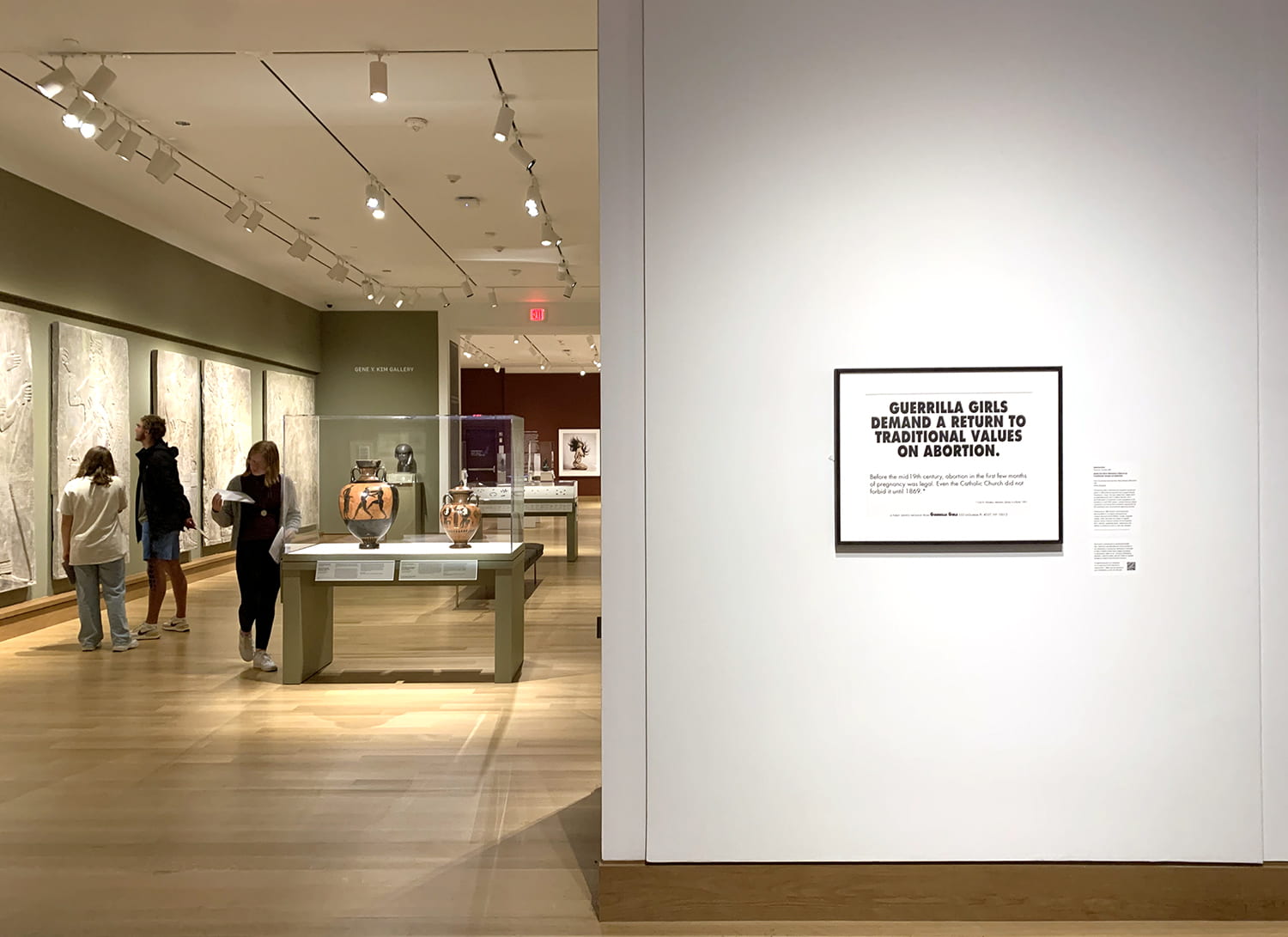The week following the June 24 US Supreme Court ruling in Dobbs v. Jackson Women’s Health Organization, the Hood Museum installed Guerrilla Girls Demand a Return to Traditional Values on Abortion. The Supreme Court’s decision to reverse a right previously interpreted as guaranteed by the US Constitution is historic. For the majority of people in this country, it’s a frightening removal of the right to bodily autonomy. Many others now fear what other rights might also be taken from them.

Other artworks in the museum’s permanent collection speak to abortion rights—including one by Karla Rosas recently highlighted in a blogpost by Mutual Learning Fellow Beatriz Yanes Martinez. After looking through the collection, I chose to put the Guerrilla Girls’ poster on view because of the historical context it provides.
This lithograph was designed and printed in 1992 during the US Supreme Court’s deliberations for Planned Parenthood v. Casey. That court’s decision upheld the constitutional right to medical abortion established by Roe v. Wade in 1973 but allowed states to implement stricter regulations on access to the procedure. Since then, legislators across the country have drafted and passed laws designed to challenge the court’s precedent. One such law led to the Dobbs v. Jackson decision. With the artwork’s bold-type demand, we can follow the trajectory of limiting abortion access from 1973 to 1992 and consider its relevance to our present moment. The smaller text also connects us to a much longer history of abortion access.

The poster’s reference to an 1869 Catholic Church document emphasizes that religious and government officials—usually cisgender, straight, white, and male—first began to regulate abortion access relatively recently. Prior to the mid-nineteenth century, abortion was generally acceptable until the point of quickening, or the moment when a pregnant person could first feel the fetus kick. Any threat to the mother’s life also took precedence. Pregnant people of all races consulted with midwives to procure herbs that would induce abortions, thus leaving the decision to have an abortion between two people with uteruses. For the Guerrilla Girls, the poster’s reference to restoring “traditional values” would return the decision to have an abortion to people who have, or have had, uteruses—just as it had been before men established themselves as gynecologists and obstetricians in the mid-nineteenth century.
It can take several years of planning and an entire staff to install an exhibition, but staff across the museum moved quickly to get this single work on the wall. In addition to writing the wall label, we also created a QR code linking to Dartmouth’s statement on the court’s recent overturning of Roe v. Wade. Pairing this artwork with Dartmouth’s statement emphasizes the College’s commitment to reproductive rights for all, including childbearing decisions. It also demonstrates the Hood Museum’s unique ability to provide a space for Dartmouth students and the public to engage with important social issues through artworks. It hangs in the Hood Museum’s second gallery and will be on display through September 25, 2022.
This post was authored by: Michael Hartman, Jonathan Little Cohen Associate Curator of American Art

ABOUT THE AUTHOR
Michael Hartman joined the Hood Museum of Art in September 2021. He holds a BA in art history and German from the University of Arkansas; an MA in the history of art from Williams College; and is completing his PhD in art history at the University of Delaware. His dissertation project, Art, Technology and Aesthetics within Landscapes of Enslavement in the Colonial South, 1740–1810, reflects his desire to critically reframe and redefine approaches to art made in North America. He has previously held positions at the Biggs Museum of American Art; the Clark Art Institute; Crystal Bridges Museum of American Art; the Dallas Museum of Art; and the Winterthur Library, Museums, and Gardens.

Comments